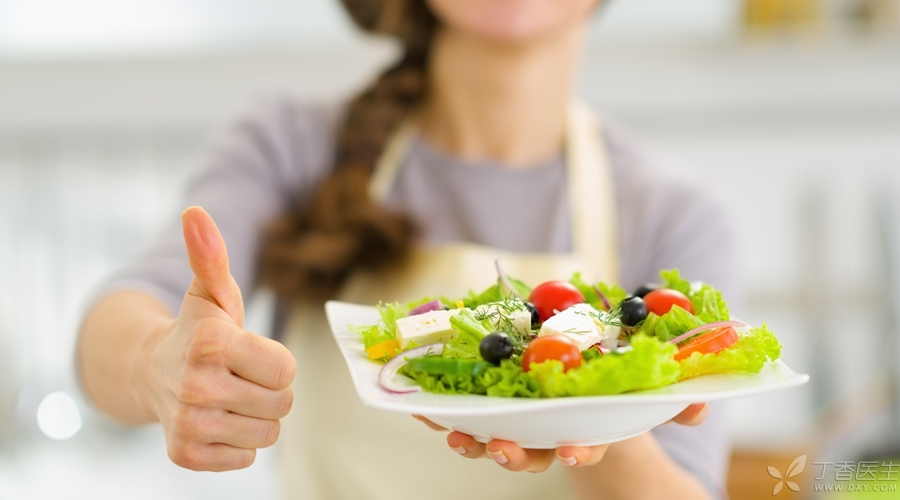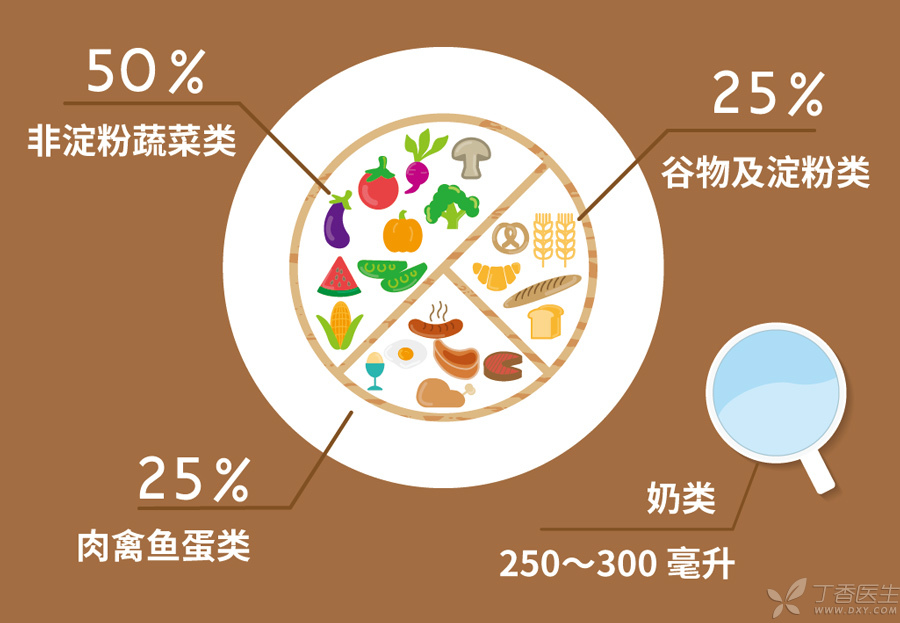
Diabetes patients often have such doubts:
How much should I eat?
How should the food be matched?
Today, Dr. Clove used a picture to tell everyone how to match the diabetes diet.
Three Steps to Match Skillfully
The first step is to find a 9-inch (23 cm) diameter plate. If we don’t have a ruler around us, we can use ID cards or bank cards to determine the size of the plate. 23 cm is about the short side length of 4 ID cards.
The second step is to split the plate in half, and then split half of it in half, just like in the picture. Here, we have divided the plate into three parts, one/two, one/four and one/four of the plate.
The third step is to put food in the three parts of the plate.
Now is the point. Which part of the plate should we put what food on?

1/2, add non-starch vegetables
The vegetables here are non-starch vegetables, and some vegetables with high starch content, such as potatoes, lotus roots and yams, are not included.
These non-starch vegetables are low in calories, rich in dietary fiber, rich in vitamins and minerals, which can help us to improve satiety without taking in too many calories, and can delay the blood sugar reaction so that the blood sugar will not rise too fast or too high after meals.
It is recommended that you eat two or more kinds of vegetables at a time. Here we recommend you to eat all kinds of leafy vegetables, such as green vegetables, pakchoi, rape, etc. All kinds of mushrooms, tomatoes, cucumbers, eggplants, etc. It is better to consume one kilo of vegetables a day.
However, it should be noted that when cooking vegetables, do not add a lot of oil, and it is best to stir-fry and cold mix.
1/4, grain and starch
This part includes our common staple food, such as rice, noodles, steamed bread, etc. It also includes coarse cereals, potatoes and vegetables with more starch content, such as oats, brown rice, sweet potatoes, potatoes, pumpkins, lotus roots, yams, etc. At the same time, miscellaneous beans with more starch are also counted, such as mung beans, kidney beans, red beans, etc.
When people choose grains, it is better to choose those with low processing degree.
Generally speaking, grains with low processing degree have low sugar index, and protein, minerals, vitamins and dietary fiber are also higher and have higher nutritional value than grains with high processing degree.
How should I choose staple food? How? Click: How should I eat staple food if I have diabetes?
1/4, put meat, poultry, fish and eggs
This part of meat, poultry, fish and eggs provides us with protein, which is indispensable to diabetics every day.
Because too much fat, especially saturated fat, will increase the risk of cardiovascular and cerebrovascular diseases, diabetics should eat as little high-fat meat as possible.
When we choose this kind of food, we need to remember this sentence:
He who has four feet is not as good as he who has two feet, and he who has two feet is not as good as he who has no feet.
In other words, eating the meat of four-legged animals such as pork and beef is better than eating the meat of two-legged animals such as chicken and duck, while fish with low saturated fat is the best choice.
Pay attention to eating lean meat when eating meat, and peel chicken, duck and poultry meat as much as possible. If conditions permit, you can eat fish 2-4 times a week.
For diabetics, you can eat one egg every day.
1 cup of milk
Diabetes patients can drink a cup of milk (250 ~ 300ml) every day. If they feel uncomfortable drinking milk, they can drink yogurt and pay attention to choosing yogurt with less sugar.
In addition, soybean milk without sugar is also a good choice.
With so many varieties of milk, how do diabetics choose? Click: How should I choose milk if I have diabetes?
Why is there no fruit?
Some people may wonder why there is no fruit in the picture.
Because, want to eat fruit is a prerequisite, blood sugar control of patients can rest assured to eat fruit, if blood sugar control is not good, or cooperate with the treatment, control blood sugar before eating is not too late.
How should I choose the dazzling array of fruits? How much should I eat? Click: Can I still eat fruit with diabetes?
